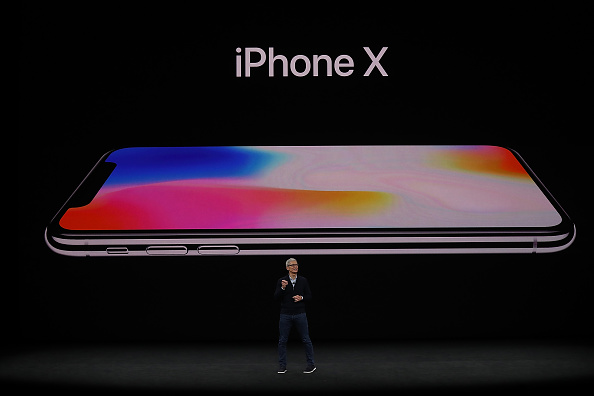
Getty Image
CUPERTINO, CA - SEPTEMBER 12: Apple CEO Tim Cook announces the new iPhone X during an Apple special event at the Steve Jobs Theatre on the Apple Park campus on September 12, 2017 in Cupertino, California. Apple is holding their first special event at the new Apple Park campus where they are expected to unveil a new iPhone. (Photo by Justin Sullivan/Getty Images)
By all early accounts, Apple had an extremely successful launch of the iPhone X. Despite being the most expensive iPhone of all-time with a price tag of $999 ($1099 at Best Buy), loyal Apple customers came out in droves, something we haven’t particularly seen in the previous iPhone models. Preorders sold out up in an extraordinary 17 minutes. The iPhone X was sold out in 20 top cities: New York, Boston, Chicago, Houston, Dallas, Minneapolis, San Antonio, Houston, Austin, Los Angeles, Phoenix, Philadelphia, San Diego, San Francisco, Salt Lake City, Washington, DC, Albuquerque, Las Vegas, Charlotte, and Raleigh, North Carolina. Now that all of these customers have the new iPhone X, Apple wants to provide some tips on one of the device’s best features – the OLED screen.
The iPhone X is Apple’s first handset with an OLED display that Apple calls the Super Retina display. “OLED emits light through each pixel, allowing for a thinner display,” Apple explains on their website. “The Super Retina display overcomes challenges with traditional OLED displays with its high brightness, wide color support, and has the best color accuracy in the industry.” The benefits of organic light emitting diode technology include a more vivid picture, darker black colors, higher contrast ratios, higher refresh rates, lower power consumption, better durability, and more lightweight.
However, there are also drawbacks. The iPhone’s new 5.8-inch OLED screen may be susceptible to burn-in. The issue that can arise in an OLED screen means that if you have an image on the screen for too long, you run the risk of it being permanently burned into the screen.
“If you look at an OLED display off-angle, you might notice slight shifts in color and hue. This is a characteristic of OLED and is normal behavior. With extended long-term use, OLED displays can also show slight visual changes. This is also expected behavior and can include “image persistence” or “burn-in,” where the display shows a faint remnant of an image even after a new image appears on the screen. This can occur in more extreme cases such as when the same high contrast image is continuously displayed for prolonged periods of time. We’ve engineered the Super Retina display to be the best in the industry in reducing the effects of OLED “burn-in.”
Apple provided some tips to make sure you’re getting the most out of your new OLED screen while not ruining your new $1,000 phone:
- Update your iPhone X to the latest version of iOS. When a new update is available, you’ll see a prompt to update.
- Use Auto-Brightness to automatically adjust the brightness of your display based on the ambient light in your location. This setting is on by default.
- Set your iPhone X to turn off the display when you aren’t using it. Choosing a shorter time is recommended.
- Avoid displaying static images at maximum brightness for long periods of time. If you have an app that keeps your display on when you aren’t actively using your iPhone X, you can temporarily reduce the brightness level using Control Center.
There you go, now go enjoy your new iPhone X, but don’t break your impressive screen.